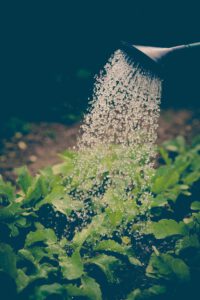Menu
Close
You are currently on the:
Visit our provincial websites
How do you cultivate resilience?
Sep 22, 2020
Where does resilience come from?
The concept of resilience, like the concept of stress, comes from physical sciences. If stress is the force exerted on a material, then resilience is the way that a material bends under pressure without breaking, before eventually returning to its initial state. Think of the fable of the oak and the reed—the oak’s trunk snaps under the force of the storm. The flexible reed, on the other hand, bends with the wind and returns to its original position once the storm has passed.
The value of hardship

Psychological resilience is a little more complex. It’s not enough to simply overcome hardship and not be destroyed by it—something also has to be learned in the process. It’s like a bone which, after being broken, heals itself in a way that makes the fracture site even stronger than it was before. The concept can also be illustrated through the Japanese art of Kintsugi, a method of repairing broken pottery by filling the cracks with golden lacquer that remains clearly visible, highlighting the breaks and adding value to the once broken object. The scars are not a reason for shame, but rather a source of pride. This approach of assigning meaning and value to hardships you experience is central to a certain vision of resilience.
Who is resilient?
Being resilient isn’t something that only people with exceptional abilities and resources are capable of. However, people often use these examples to illustrate the concept because they are more spectacular and make an impression. They also unfortunately lead people to believe that resilience is an unattainable goal or that it is innate, i.e., you’re either born resilient or you’re not. In nature, even things that may at first seem vulnerable can prove to be resilient, depending on the type of shock or threat they’re up against. Remember the reed and how its flexibility allowed it to adapt to change.
The same goes for humans—anyone can be resilient. It just depends on the individual and the circumstances. We know that a cactus can go without water for a long period of time, but what if it is deprived of light? Not everything affects us all the same way.
When assessing your capacity for resilience, it’s important to look at the big picture. Think of all the challenges you’ve faced—which ones do you feel you’ve successfully overcome and what did you learn from them?
It’s also important to understand that just because you overcome an ordeal doesn’t mean you’re indifferent to it or unaffected by it. It’s a process, not a question of “fight” or “fail.” It’s not about the initial shock or the fall—it’s about how you get back up. The range of emotions (anger, disbelief, denial, etc.) that you may experience after going through something tough and how they manifest (crying, mood swings, withdrawal, etc.) are not signs of weakness and they don’t mean that you’re not resilient. Sometimes they’re just part of the journey that will hopefully lead you to realize the strengths and resources you have to overcome your problems.
The same goes for the various tools at your disposal. As spectacular as the idea of the solitary figure who fights and overcomes hardships all alone may be, asking for help, surrounding yourself with people you can count on, and turning to them for support are important acts of resilience. These are all examples of protective factors. Some are individual, such as your sense of humour and your capacity for self-reflection, and others are external environmental factors, such as your social network and a healthy work environment.
Cultivating resilience

So if everyone is capable of resilience, how do you tap into it? A number of factors come into play here. How a person or community—because resilience is not just individual—perceives an event often has a greater impact than the event itself. Your perception determines whether you will experience an event as traumatic or not, and therefore whether you can overcome it without suffering too many negative consequences. This happens over time, and your perception of the event can change after the fact and take on a more positive meaning than it initially had (“at the end of the day, the event allowed me to do x, so it was good”).
The way you see the world also plays a role in how you perceive and overcome hardship. This is what is referred to as a locus of control. If you have an internal locus of control, you believe that you are mostly in charge of your own life and that external factors you can’t control (chance, others, luck, etc.) have little impact on your life. If you believe you’re in control of your own destiny, it’s easier to find the strength and hope to overcome hardship. Otherwise, you might give up before you even try because if you think you have no control, everything you do feels like a waste of time.
This doesn’t mean you should ignore the fact that external forces can affect you. That kind of thinking can have an undesirable effect, leading you to individualize problems and deny their social roots. Rather, once you realize you possess a certain ability to take things into your own hands, no matter how you do it (activism, for example), you can also find the strength and energy to fight and overcome hardship.
Research also shows that people who are more adept at overcoming challenges do not necessarily have special qualities—they just use the skills they have effectively and fully. It’s more about knowing yourself, identifying your strengths, and building on them rather than excelling at something in particular. As mentioned above, healthy relationships and a strong support network are also important resources to draw from.
Research shows that another characteristic of individuals who are particularly resilient is their ability to distinguish between global and specific, permanent and impermanent. It’s easier to overcome a hardship if it is situated in time and you understand that it is not a reflection on you as a person. If you look at each problem as something that defines you and will last forever, it’s harder to find space to get away from it and catch your breath. Of course, some hardships are wider-reaching and last longer than others. It’s perfectly normal for them to be harder to overcome and it doesn’t mean that you are not resilient.
Although some people are more prone to being resilient or are taught resilience from a young age, anyone can learn it. Once you know that your perception of an event affects how you experience it, you can make a conscious effort to analyze the hardships you face in a way that leaves room for action and lets you use the resources at your disposal.
Why details matter
It’s fine to understand that everyone can be resilient in their own way, but it’s also important to pay attention to the concept of resilience and how it’s presented. As positive as resilience is, because it gives meaning and hope, if it’s misunderstood it can lead to the glorification of the very idea of going through hardship.
When we glorify the challenge, we miss an important opportunity to look into the sources of the problem. Like with any skill, the more challenges we face, the more opportunities we may have to strengthen and cultivate our resilience. But that doesn’t necessarily mean that we should seek out more challenges. Think about the things people say to a student who is having trouble juggling schoolwork, a part-time job, and efforts to be financially self-sufficient. Saying things like “I ate peanut butter and plain pasta when I was your age too! You’ll live!” downplays the difficulties the student is experiencing and treats them simply as a part of growing up. Wouldn’t it be better to try to make life easier for everyone so we all have the benefit of optimal physical and mental health? Telling people they need to be resilient just puts an additional weight on their shoulders.
As mentioned above, being resilient is not about being indifferent to the hardships you encounter. Above all else, be kind and compassionate with yourself and give yourself permission to make mistakes. Being resilient means doing the best you can and using both internal and external resources to overcome hardship. Once you’ve weathered the storm, you can decide to return to your life as it used to be or make changes. COVID-19 has exposed many flaws in our system, and when it’s all over we can do more than just go back to life as it was before—we can take what we’ve learned and use it to improve individual and collective well-being. Sometimes the problem isn’t the hardship itself, but the system that allowed it to exist.

Grab your gardening tools!
When you have a better understanding of what resilience is—and isn’t—it’s easier to identify it in your own garden, so to speak, and cultivate it when you want or need it. By focusing on your perception, you can separate the normal everyday events from the troublesome weeds. As you work on becoming more resilient, remember that it’s a journey, not a destination. So let’s try to be wise gardeners who are patient, collaborative, and kind when it comes to the challenges in our own garden—and in the gardens of others!
Sources :
https://www.inspq.qc.ca/publications/3016-resilience-cohesion-sociale-sante-mentale-covid19
https://www.newyorker.com/science/maria-konnikova/the-secret-formula-for-resilience
https://www.nytimes.com/2015/12/06/magazine/the-profound-emptiness-of-resilience.html
https://www.lapresse.ca/debats/opinions/202004/07/01-5268447-serons-nous-socialement-resilients-.php
Photo credits : icon0.com, Markus Spiske, cottonbro from Pexels